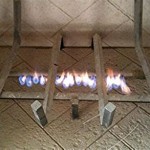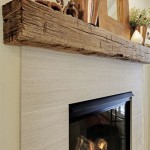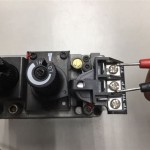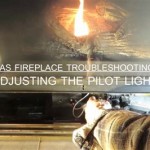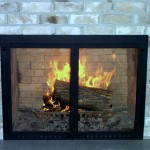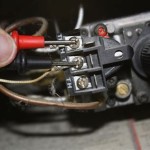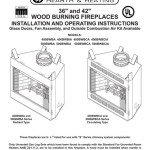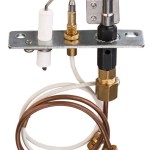Fireplace Shelf Mantel Designs: A Comprehensive Guide
The fireplace mantel, often functioning as a shelf, serves as a focal point within a living space. Its design directly influences the room's aesthetic, providing an opportunity to showcase personal style and create a sense of warmth and character. The selection of a suitable fireplace shelf mantel design involves considering factors such as the architectural style of the room, the size of the fireplace, the intended function of the mantel, and the overall desired aesthetic.
This article explores various fireplace shelf mantel designs, delving into materials, styles, and practical considerations to assist in making informed decisions for both new installations and renovations.
Material Selection for Fireplace Shelf Mantels
The material used in constructing a fireplace shelf mantel significantly impacts its appearance, durability, and overall cost. Several materials are commonly employed, each possessing unique characteristics:
Wood: Wood mantels provide a classic and versatile option, adaptable to numerous design styles, from rustic to contemporary. Solid wood mantels offer inherent warmth and a natural aesthetic. They can be stained or painted to match existing décor. Different wood species offer varying levels of hardness, grain patterns, and resistance to moisture and warping. Popular choices include oak, maple, pine, and walnut. Engineered wood products, such as MDF (Medium-Density Fiberboard), present a more cost-effective alternative, offering a smooth and consistent surface for painting. Wood mantels, however, require appropriate fire clearances, particularly with gas or electric fireplaces, to prevent scorching or fire hazards.
Stone: Stone mantels exude a sense of permanence and elegance. Natural stone options, such as marble, granite, and limestone, each showcase unique veining and textures. Stone is highly durable and resistant to heat, making it a particularly well-suited material for fireplaces. However, stone mantels tend to be heavier and require professional installation due to their weight and the need for proper structural support. Faux stone options, constructed from concrete or resin materials, offer a lighter and more affordable alternative while replicating the appearance of natural stone.
Concrete: Concrete mantels, especially in their raw or polished state, have gained popularity in modern and industrial-inspired designs. Concrete is a highly versatile material that can be cast into various shapes and finishes. It offers excellent durability and fire resistance. The color and texture of concrete can be customized by adding pigments or aggregates during the casting process. Like stone, concrete mantels can be heavy and may require professional installation.
Metal: Metal mantels, often constructed from steel, iron, or aluminum, contribute a sleek and contemporary aesthetic. Metal can be powder-coated in a range of colors or left with a natural finish. Metal mantels are resistant to heat and easy to clean. However, they can become hot to the touch, requiring careful consideration of their placement and proximity to the fireplace opening. Intricate metal designs can be achieved through techniques such as welding and laser cutting.
Styles and Designs of Fireplace Shelf Mantels
The style of a fireplace shelf mantel should complement the overall architectural design of the room and reflect the homeowner's personal preferences. Several distinct styles are prevalent in fireplace mantel design:
Traditional: Traditional mantels often incorporate classic architectural elements such as corbels, fluting, and detailed moldings. These mantels are typically constructed from wood and feature a symmetrical design. Common characteristics include a substantial shelf depth and ornate detailing. Traditional mantels evoke a sense of formality and timelessness. They are frequently paired with brick or stone fireplaces in more classically styled homes.
Rustic: Rustic mantels embrace natural textures and materials, often utilizing reclaimed wood or unfinished timber. These mantels typically showcase imperfections such as knots, grain variations, and saw marks, adding to their character. Rustic mantels can incorporate elements such as exposed beams or live edges. They are well-suited for farmhouse, cottage, and log cabin-style homes.
Modern: Modern mantels emphasize clean lines, simplicity, and a minimalist aesthetic. These mantels often feature sleek shapes and are constructed from materials such as concrete, metal, or glass. Modern mantels typically have a streamlined profile and lack ornate detailing. They are well-suited for contemporary homes and apartments. The color palettes often favor neutral tones like white, gray, or black.
Transitional: Transitional mantels blend elements of both traditional and modern design. These mantels typically incorporate clean lines and simple shapes but may also include subtle detailing or architectural elements. Transitional mantels offer versatility and can complement a wide range of interior design styles. They provide a balance between formality and informality, making them a popular choice for many homes.
Floating: Floating mantels create a visually appealing effect by appearing to be suspended from the wall without visible supports. These mantels are typically constructed from wood or other lightweight materials and are mounted using hidden brackets or hardware. Floating mantels offer a minimalist and modern aesthetic and can be particularly well-suited for smaller spaces.
Practical Considerations for Fireplace Shelf Mantel Installation
Installing a fireplace shelf mantel requires careful planning and adherence to safety regulations. Several practical considerations are essential to ensure a successful and safe installation:
Fire Clearance: Maintaining adequate fire clearance between the mantel and the fireplace opening is paramount to prevent fire hazards. Building codes typically specify minimum clearance distances based on the type of fireplace and the material of the mantel. Consulting local building codes and manufacturer's instructions is crucial to ensure compliance. Non-combustible materials, such as stone or metal, generally require less clearance than combustible materials like wood.
Weight Capacity: The mantel must be able to support the weight of decorative items placed on it without sagging or collapsing. The weight capacity of the mantel depends on its material, construction, and mounting system. Ensuring adequate structural support is critical, particularly for heavier mantels or when planning to display heavy objects. Reinforcement may be necessary, especially in older homes.
Mounting System: The mounting system must be appropriate for the type of wall and the weight of the mantel. Common mounting methods include using screws, brackets, or a combination of both. Screws should be securely anchored into wall studs or masonry. For heavier mantels, professional installation is advisable to ensure proper support and stability. Consider the wall material (drywall, plaster, brick, etc.) when selecting the appropriate anchors or fasteners.
Dimensions and Proportion: The dimensions of the mantel should be proportional to the size of the fireplace and the room. A mantel that is too small may appear insignificant, while a mantel that is too large can overwhelm the space. The mantel's height, width, and depth should be carefully considered to achieve a balanced and harmonious look. Consider the overall scale of the room and other architectural features when determining the appropriate mantel dimensions.
Accessibility: The mantel should be positioned at a comfortable height for viewing and accessing decorative items. Consider the height of the fireplace opening and the surrounding furniture when determining the mantel's height. The depth of the mantel should also be considered, allowing sufficient space for displaying items without obstructing the fireplace opening. Ensure that items placed on the mantel are not easily knocked over or become a safety hazard.
Professional Installation: While some homeowners may opt for DIY mantel installation, professional installation is often recommended, particularly for heavier mantels or complex installations. Professional installers possess the expertise and tools necessary to ensure proper support, alignment, and fire safety. Engaging a qualified professional can provide peace of mind and minimize the risk of errors or safety hazards.
In conclusion, the selection and installation of a fireplace shelf mantel design is a multifaceted process involving careful consideration of materials, styles, practical considerations, and safety regulations. The information provided in this article serves as a guide to navigate the various aspects of fireplace mantel design, enabling informed decisions that enhance the aesthetic appeal and functionality of a living space.

My Pottery Barn Shelf Mantel Bless This Nest

48 72 Floating Fireplace Shelf With Corbels Country Mantel

Collection Of Premium Wood Fireplace Mantels Dogberry

Fireplace Mantel Shelf Ideas

30 Tips To Diy And Decorate Your Fireplace Mantel Shelf

Pin On For The Home

30 Mantel And Bookshelf Styling Tips

35 Fireplace Mantel Ideas For A Heavenly Hearth Bored Panda

30 Tips To Diy And Decorate Your Fireplace Mantel Shelf

Modern Floating Mantel Shelf Industrial Mantle Contemporary

